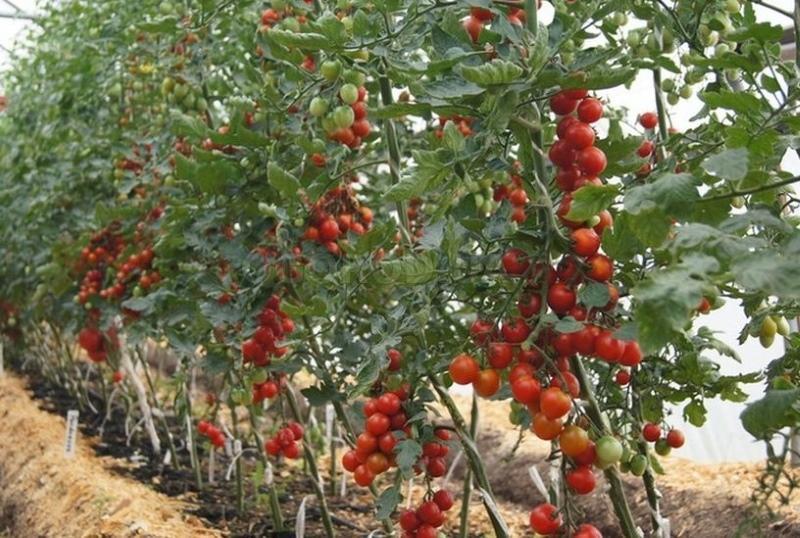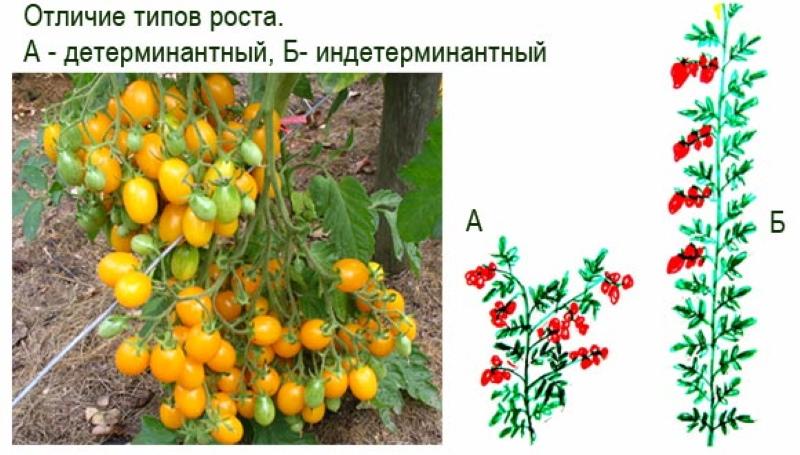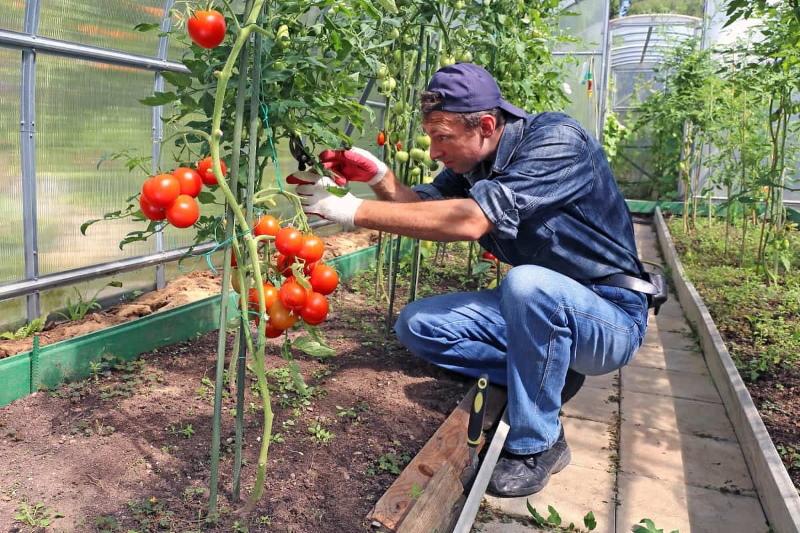Ideal for greenhouses - an indeterminate tomato variety, what is it, the pros and cons

In the south, this type of culture is known to almost all gardeners. However, in colder regions, it is quite rare in the open field to find an indeterminate tomato variety, what it is, only the owners of greenhouses and greenhouses know. And the point is not at all exclusivity, but in the peculiarities of such tomatoes. They differ from other varieties not only in fruiting, but also in their appearance and structure of the bushes. What are these differences and where is it better to grow such plants?
Indeterminate tomato variety - what kind of tomatoes are they?

The term "determinant" means definite, having a limitation. With regard to tomatoes, it highlights the peculiarity of varieties: the bush stops growing after it has formed a certain number of brushes. The prefix "in" deprives species of this quality. Indeterminate tomatoes grow most of the season. They can reach a height of more than 2 m, while forming clusters over almost the entire height of the stem.
Tomatoes-"giants" differ from other species even in the early stages of development. They have larger seeds, a long knee at the sprouts that hatch, large seedlings with a powerful stem. The bushes tie large brushes, while the fruits in them are the same size, from the bottom to the very top. The growth of such varieties can only be stopped by force, by pinching their tops. Plants give few stepchildren, and fruiting lasts until the very frost.
Benefits of indeterminate varieties
 These types have both their advantages and some disadvantages. Of the advantages, it is worth noting, first of all, a high yield due to the large number of ovaries.
These types have both their advantages and some disadvantages. Of the advantages, it is worth noting, first of all, a high yield due to the large number of ovaries.
In addition, indeterminate varieties:
- They very rarely get sick, because they are formed into one trunk, cutting off the stepsons and the lower leaves. This improves air circulation and prevents the appearance and development of fungus.
- Fruiting all summer and until late autumn, until frost comes.
- They are grown on supports, tying up the plants, so harvesting is many times more convenient than from low bushes.
However, there are also some negative nuances. Growing indeterminate tomatoes is best done in the southern lane. In the conditions of a long summer, they have time to fully "open up". In the central and middle lane, it will be necessary to stop their growth so that the fruits in the lower part of the stem have time to ripen before frost, or to plant them in greenhouses.
The most popular indeterminate tomatoes
 Among these varieties there are both very miniature tomatoes, which give fruits no more than 50 g in weight, and real giants weighing up to 1 kg.Their color is also varied, from ordinary red to yellow and pink tomatoes.
Among these varieties there are both very miniature tomatoes, which give fruits no more than 50 g in weight, and real giants weighing up to 1 kg.Their color is also varied, from ordinary red to yellow and pink tomatoes.
Some of the best varieties of tomatoes are considered:
- Miracle of the earth;
- Christina Plume;
- Cherokee;
- Star Gold;
- Andreevsky surprise;
- Bull heart;
- Abakan pink;
- King of Siberia;
- Chernomor.